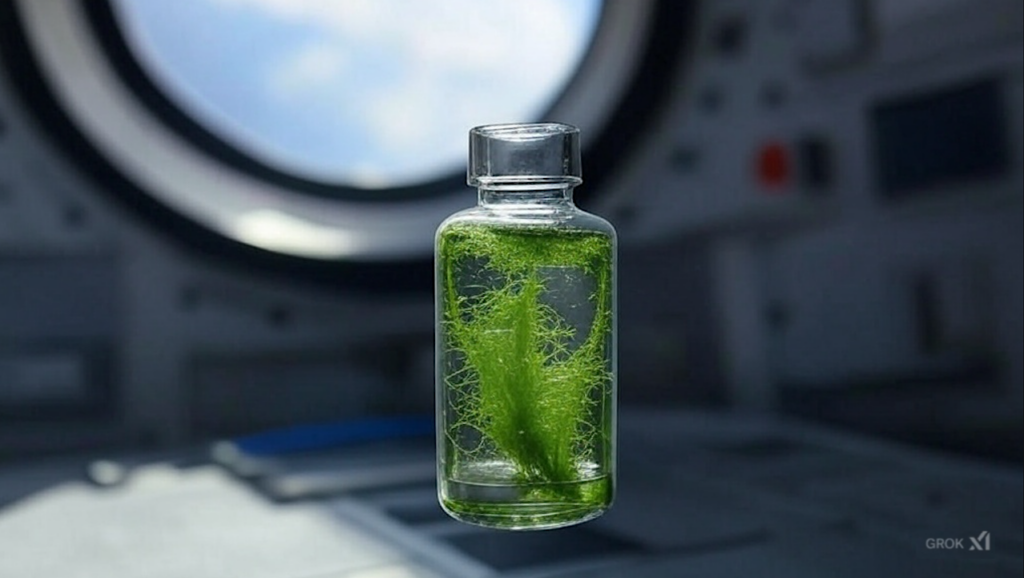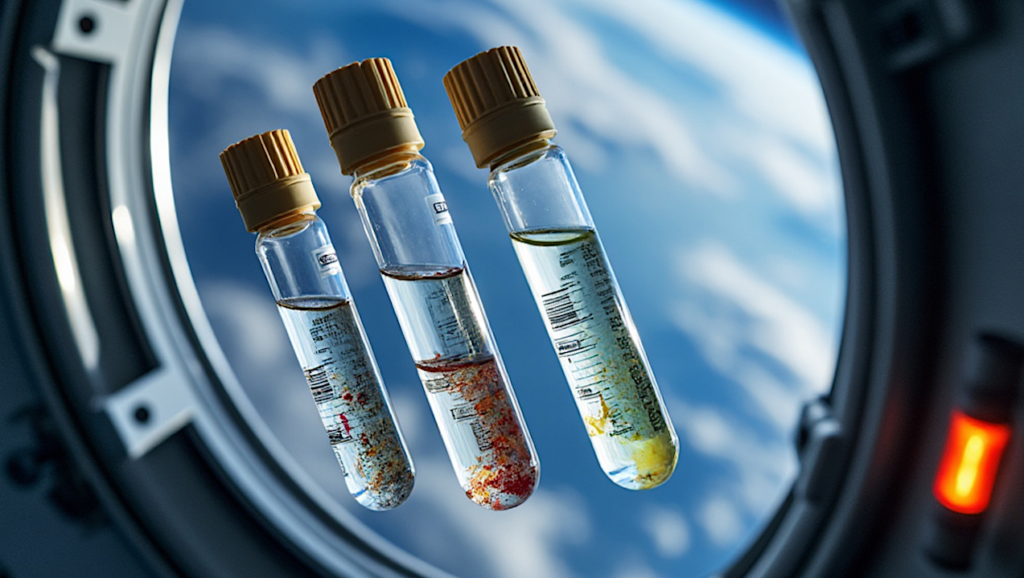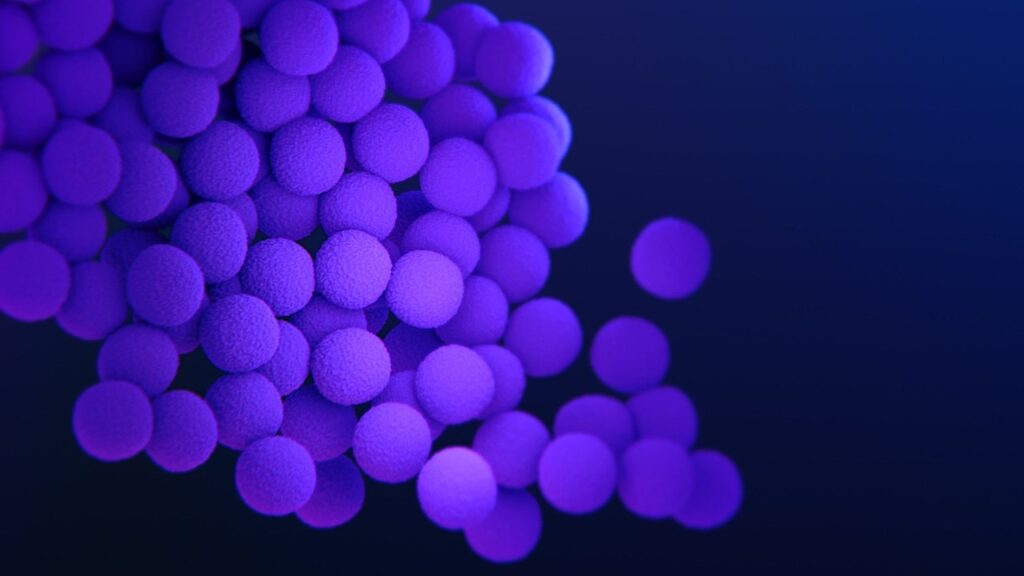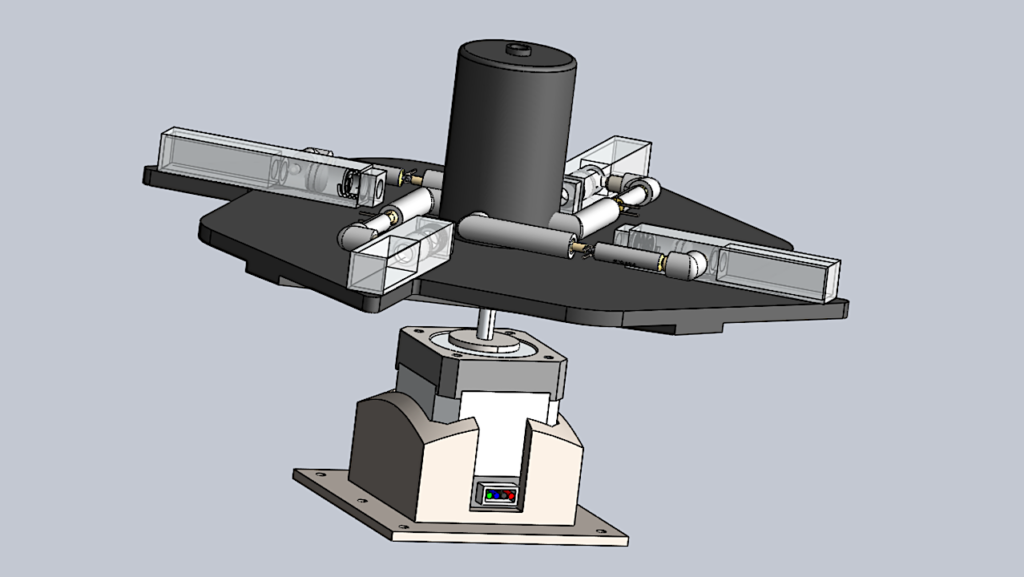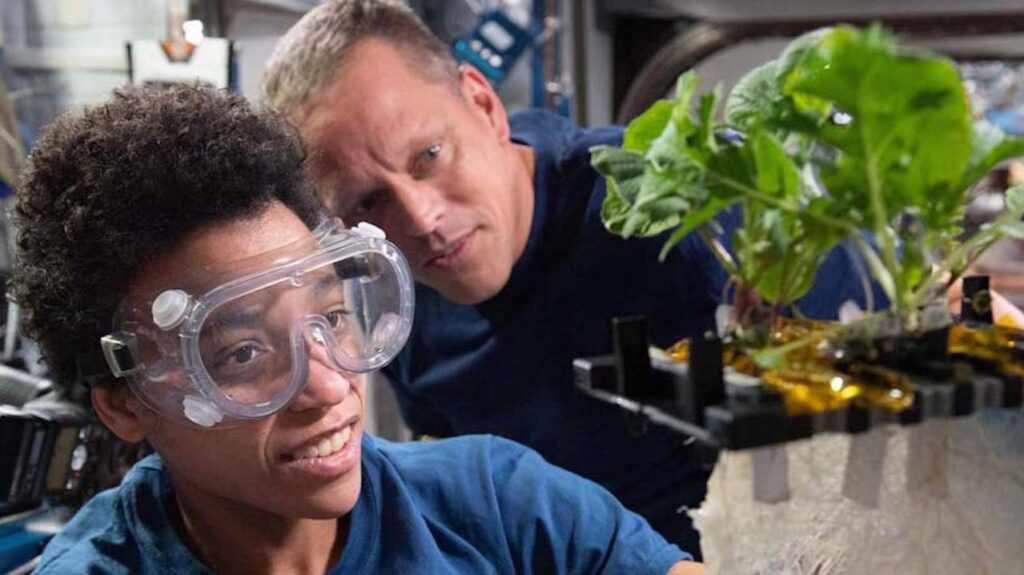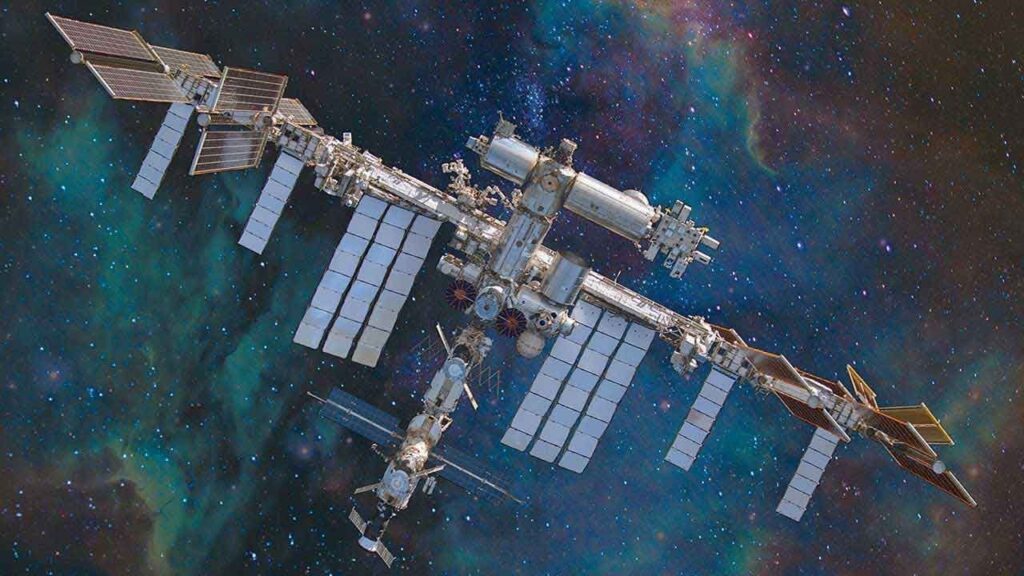NASA Spaceline Current Awareness List #1,131 10 January 2025 (Space Life Science Research Results)
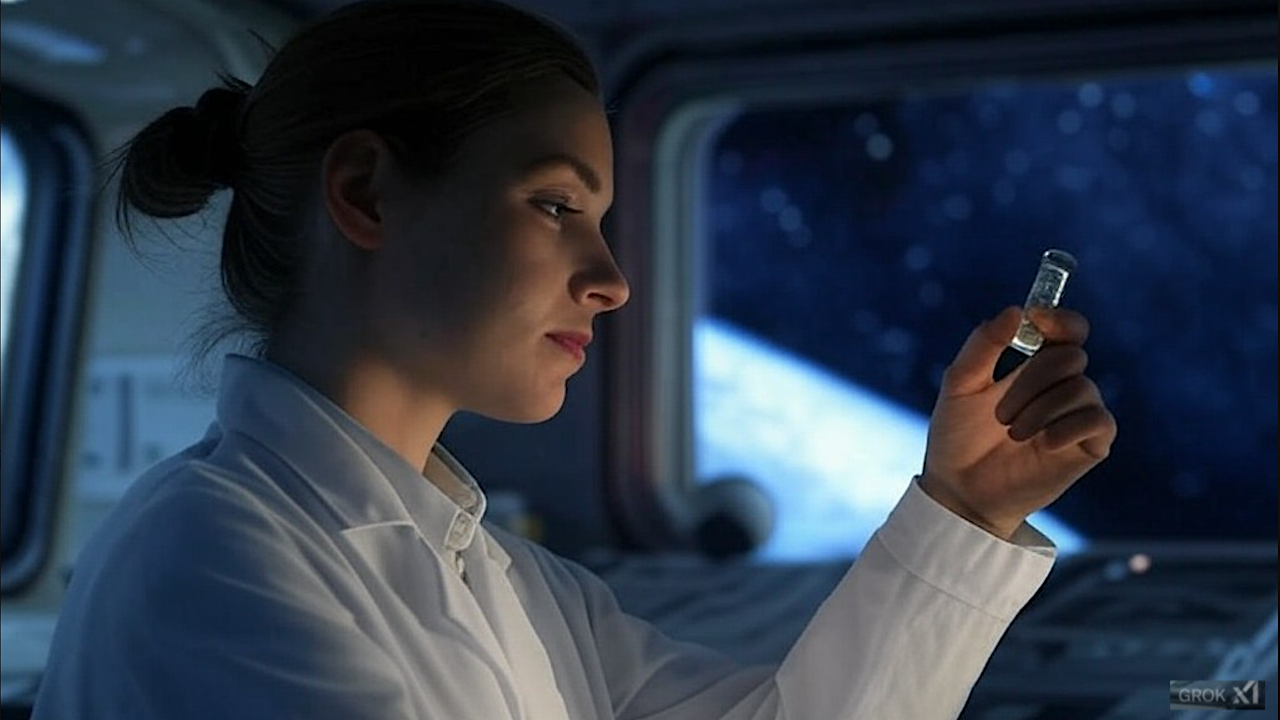
NASA Spaceline Current Awareness — Grok via Astrobiology.com
The abstract in PubMed or at the publisher’s site is linked when available and will open in a new window.
Papers deriving from NASA support:
- Tays GD, Hupfeld KE, McGregor HR, Banker LA, De Dios YE, Bloomberg JJ, Reuter-Lorenz PA, Mulavara AP, Wood SJ, Seidler RD.The microgravity environment affects sensorimotor adaptation and its neural correlates.Cereb Cortex. 2025 Jan 4.Note: ISS results.
Journal Impact Factor: 2.9
Funding: “K00AG068440/National Institute on Aging fellowships; T32-NS082128/GF/NIH HHS/United States; 80NSSC18K0783/NASA/NASA/United States.” - Diak DM, Crucian BE, Nelman-Gonzalez M, Mehta SK.Saliva diagnostics in spaceflight virology studies-A review.Viruses. 2024 Dec 12;16(12):1909.Note: This article is part of Special Issue “Saliva in the Diagnosis of Viral Diseases” (https://www.mdpi.com/journal/viruses/special_issues/2WH016Z48O). Additional articles will be forthcoming and may be found in the link to the Special Issue. This article may be obtained online without charge.
Journal Impact Factor: 3.8
Funding: “The studies were supported by NASA’s Human Research Program via NASA-funded grants.” - Ali N, Beheshti A, Hampikian G.Space exploration and risk of Parkinson’s disease: A perspective review.npj Microgravity. 2025 Jan 3;11(1):1. Review.Note: This article may be obtained online without charge.
Journal Impact Factor: 5.1
Funding: “This study was funded by NASA (80NSSC22M0051, ES6129-783637) to NA, with publication charges supported by NIH (P30GM154497).” - Iyer J, Marsh TS, Fisher RJ, Verma V.Nutrient stability in NASA spaceflight experiment rodent food bars.Foods. 2024 Dec 18;13(24):4093.Note: From the abstract: “The Nutrient-upgraded Rodent Food Bar (NuRFB) is the standard diet for mice in NASA’s Rodent Research Project aboard the International Space Station (ISS). Given the nature of spaceflight and the lengthy production process of the food bars, a shelf-life assessment was conducted to evaluate nutritional stability over time (ranging from 0 to 27 months) and under different storage conditions (refrigerated, ambient, and refrigerated + ambient), where ambient is 22-23 °C. Lipid oxidation markers and fat- and water-soluble vitamins were assessed under various time and temperature conditions using AOAC International methods.” This article is part of Section “Food Nutrition” (https://www.mdpi.com/journal/foods/sections/Food_Function_Nutrition) and may be obtained online without charge.
Journal Impact Factor: 4.7
Funding: “This research was funded by NASA Rodent Research Project 10448.8CID013RRP.40.” - Høyland LE, VanLinden MR, Niere M, Strømland Ø, Sharma S, Dietze J, Tolås I, Lucena E, Bifulco E, Sverkeli LJ, Cimadamore-Werthein C, Ashrafi H, Haukanes KF, van der Hoeven B, Dölle C, Davidsen C, Pettersen IKN, Tronstad KJ, Mjøs SA, Hayat F, Makarov MV, Migaud ME, Heiland I, Ziegler M.Subcellular NAD+ pools are interconnected and buffered by mitochondrial NAD+.Nat Metab. 2024 2024/12/01;6(12):2319-37.PI: M.E. MigaudNote: From the abstract: “The coenzyme NAD+ is consumed by signalling enzymes, including poly-ADP-ribosyltransferases (PARPs) and sirtuins. Ageing is associated with a decrease in cellular NAD+ levels, but how cells cope with persistently decreased NAD+ concentrations is unclear. Here, we show that subcellular NAD+ pools are interconnected, with mitochondria acting as a rheostat to maintain NAD+ levels upon excessive consumption.”
Journal Impact Factor: 19.2
Funding: “We acknowledge funding by the Norwegian Research Council (315849 and 325172) to M.Z., I.H. and Ø.S. In addition, this work was supported by the Translational Research Institute through NASA Cooperative Agreement NNX16AO69A.” - Stepanyan A, Brojakowska A, Zakharyan R, Hakobyan S, Davitavyan S, Sirunyan T, Khachatryan G, Khlgatian MK, Bisserier M, Zhang S, Sahoo S, Hadri L, Rai A, Garikipati VNS, Arakelyan A, Goukassian DA.Evaluating sex-specific responses to western diet across the lifespan: impact on cardiac function and transcriptomic signatures in C57BL/6J mice at 530 and 640/750 days of age.Cardiovasc Diabetol. 2024 Dec 28;454.PI: D.A. GoukassianNote: This article may be obtained online without charge.
Journal Impact Factor: 8.5
Funding: “This work was funded by the NASA Human Research Program, grant No: 80NSSC19K1079 (formerly, 80NSSC18K0921) and grant No: 80NSSC21K0549 (PI – Kenneth Walsh, DAG – subcontract) to D.A.G. and the ADVANCE Research Grant provided by the Foundation for Armenian Science and Technology. This study was also supported by NIH/NHLBI grants 1K01HL159038-01A1 and 5R25HL146166, and the American Heart Association grant 24CDA1269532 (to M.B.), and NIH/NHLBI R01HL158998-01A1 and R01HL173203-01, NIH/NCATs R03TR004673 to L.H, and American Lung Association Innovation Award 1056600, and American Heart Association Award to L.H.” - Rajwar MC, Naja M, Rawat P, Venkataramani S, Tiwari RK.Health impacts, ozone and secondary organic aerosol formation potential of aromatic hydrocarbons (C6-C8) in the Central Himalayas and the Indo-Gangetic Plain.Environ Sci Pollut Res Int. 2024 Dec 30.Journal Impact Factor: 5.8
Funding: M.C. Rajwar is affiliated with NASA Langley Research Center.
Other papers of interest:
- Azariah J, Terranova U.Microgravity and cardiovascular health in astronauts: A narrative review.Health Sci Rep. 2025 Jan 7;8(1):e70316.Note: This article may be obtained online without charge.
- Cools B, Akyüz SH, Vinken M.Hepatology during spaceflight.In: Krittanawong C, ed. Precision Medicine for Long and Safe Permanence of Humans in Space: Academic Press. 2025. p. 593-600.
- Fine LG.Body fluid homeostasis and kidney function in spaceflight.In: Krittanawong C, ed. Precision Medicine for Long and Safe Permanence of Humans in Space: Academic Press. 2025. p. 73-7.
- Franco N, Babocs D, Christiansen R, Drudi LM, Rajput S.Vascular surgery in spaceflight.In: Krittanawong C, ed. Precision Medicine for Long and Safe Permanence of Humans in Space: Academic Press. 2025. p. 435-44.
- Oluwafemi FA, Olubiyi-Oluwafemi RA.Spaceflight hygiene: A keynote for space travelers and spacecraft designers.In: Krittanawong C, ed. Precision Medicine for Long and Safe Permanence of Humans in Space: Academic Press. 2025. p. 563-92.
- Ong J, Waisberg E, Masalkhi M, Sarker P, Kamran SA, Zaman N, Paladugu P, Tavakkoli A, Lee AG.Ophthalmology in space.In: Krittanawong C, ed. Precision Medicine for Long and Safe Permanence of Humans in Space: Academic Press. 2025. p. 409-33.
- Patel SR, Nakada SY.Urolithiasis risk in spaceflight.In: Krittanawong C, editor. Precision Medicine for Long and Safe Permanence of Humans in Space: Academic Press. 2025. p. 61-71.
- Puukila S, Alwood JS, Christenson LK, Ronca AE, Steller JG.Women’s health in spaceflight.In: Krittanawong C, editor. Precision Medicine for Long and Safe Permanence of Humans in Space: Academic Press. 2025. p. 137-50.
- Wakayama S, Wakayama T.Mammalian reproduction in spaceflight.In: Krittanawong C, ed. Precision Medicine for Long and Safe Permanence of Humans in Space: Academic Press. 2025. p. 397-407.
- Chen L, Yang Q, Zhang Y, Sun Y.Miniature-inverted-repeat transposable elements contribute to phenotypic variation regulation of rice induced by space environment.Front Plant Sci. 2025 Jan 7;15:1446383.Note: This article is part of Research Topic “Plant Plasticity and Epigenetics” (https://www.frontiersin.org/research-topics/51673/plant-plasticity-and-epigenetics/articles) and may be obtained online without charge.
- Green DA, Herssens N, Ciampi de Andrade D, Weber T, De Martino E.Human movement in simulated hypogravity – Bridging the gap between space research and terrestrial rehabilitation.Front Neurol. 2024 Dec 18;15:1520540.Note: This article is the Editorial to Research Topic “Human movement in simulated hypogravity – Bridging the gap between space research and terrestrial rehabilitation” (https://www.frontiersin.org/research-topics/37230/human-movement-in-simulated-hypogravity—bridging-the-gap-between-space-research-and-terrestrial-rehabilitation/articles) and may be obtained online without charge.
- Hurd VS, Valle MD, Kravets VG, Anderson AL, Le NN, Kendall JL, Hayman AP, Riscinti M.Artificial intelligence assistance in point-of-care ultrasound skill retention for novice users in space medicine scenarios.Wilderness Environ Med. 2025 Jan 2;10806032241304441. Online ahead of print.
- St-Martin P, Le Roux E, Bergouignan A.Metabolic adaptations to microgravity.In: Krittanawong C, ed. Precision Medicine for Long and Safe Permanence of Humans in Space: Academic Press. 2025. p. 91-120.
- Wuest SL, Cerretti G, Polzer J, Gerig S, Zumbühl C, Jost C, Rüfenacht L, Eberli R, Krucker-Bösch B, Traversari J, Horn M, Pérez DI, Giger-Lange C, Rattenbacher-Kiser KF, Ille F, Székely G, Lienkamp SS, Egli M.Recordings on PIEZO1-overexpressing oocytes in microgravity.Microgravity Sci Technol. 2025 Jan 6;37:3.Note: From the abstract: “Exposure to acute and prolonged microgravity triggers numerous physiological adaptations. To date, the underlying molecular mechanisms are not well understood, and several pathways have been proposed. Among other candidates, specific ion channels are hypothesized to be gravity dependent, but it has not been possible to conclusively demonstrate gravity dependency of specific protein entities. Therefore, we developed a miniaturized two-electrode voltage clamp (TEVC) that allowed electrophysiological experiments on Xenopus laevis oocytes using the GraviTower Bremen Prototype (GTB-Pro).” This article may be obtained online without charge.
- Zhang P, Zhu Y, Chen P, Zhou T, Han ZY, Xiao J, Ma JF, Ma W, Zang P, Chen Y.Effects of Bifidobacterium lactis BLa80 on fecal and mucosal flora and stem cell factor/c-kit signaling pathway in simulated microgravity rats.World J Gastroenterol. 2025 Jan 7;31(1):96199.Note: Hindlimb unloading study. This article may be obtained online without charge.
- Wakayama S, Wakayama T.Can humanity thrive beyond the galaxy?J Reprod Dev. 2024 Dec 29. Online ahead of print.
- Liu X, Zhu X, Han Z, Liu H.Recent advances in the mechanisms of quality degradation and control technologies for peanut butter: A literature review.Foods. 2025;14(1):105.Note: Peanut butter is rich in protein, which aids in muscle repair and growth. For strength-training athletes, peanut butter is a convenient source of protein, with 7 g of protein per two tablespoons of peanut butter. In addition, peanut butter contains antioxidants, such as vitamin E, which help reduce exercise-induced oxidative stress and protect cellular health. Peanut butter is favored among astronauts and researchers, according to a related report by the National Aeronautics and Space Administration (NASA/https://www.semanticscholar.org/paper/Space-Food-and-Nutrition%3A-An-Educator’s-Guide-with-Casaburri-Gardner/8328a5f987317a7ceb5c90c934eace16678ccbe7). This article is part of Special Issue “Exploring the Effect of Different Processing Methods on In Vitro Digestibility of Food Proteins” (https://www.mdpi.com/journal/foods/special_issues/2BA0LFO81P). This article may be obtained online without charge.
- Aronson S, Ikuma L, Nahmens IUsing digital/virtual escape rooms to measure team performance and cohesion of isolated multicultural teams.Int J Ind Ergon. Jan;105:103671.Note: From the abstract: “Multicultural teams are difficult to study when they are put in a long-term physically isolated environment, necessitating alternatives for research. This study determines the validity and reliability of a virtual escape room that promoted a simulated, isolated environment according to 93% of the participants tested.”
Astrobiology, space biology, space medicine, microgravity,


